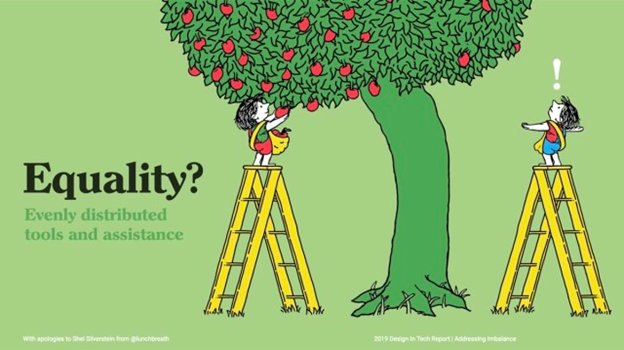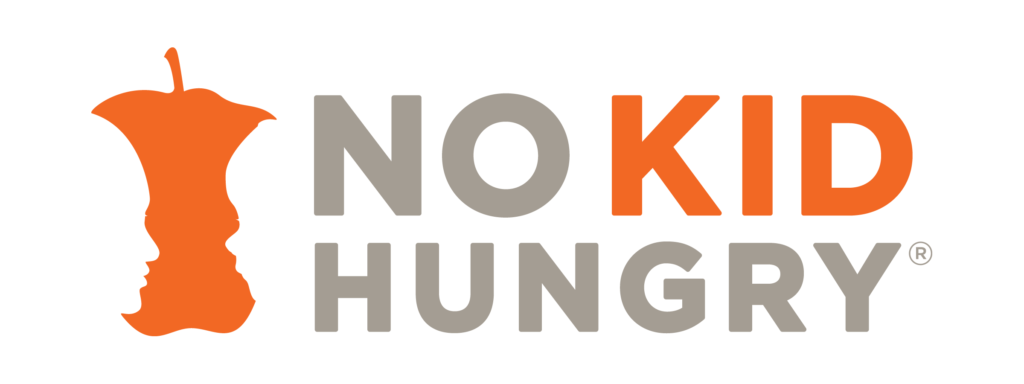SCHOOL NUTRITION EQUITY
WHAT IS EQUITY?
Equity is the quality of being fair or impartial. This sounds a lot like equality, but it’s more complicated than that.
- To treat people equally means to give everyone the same resources and opportunities.
- To treat people equitably means to acknowledge that everyone has different circumstances and to provide the necessary resources to help them reach the same result.
Equity is important because certain groups of people have historically been marginalized and are still disadvantaged and discriminated against. Structural racism is one important contributor to this. By not acknowledging imbalanced social systems, it’s impossible to have justice for all people. Equity is a solution.



Download Nebraska Appleseed’s Nebraska School Nutrition Equity Report 2022 to find out more about the topics on this webpage and more.

Nebraska Appleseed’s school nutrition equity work is made possible through No Kid Hungry Nebraska, a public-private coalition working to end childhood hunger. The partnership between Share Our Strength and Nebraska Appleseed is ending childhood hunger in Nebraska by ensuring kids get the food they need.
MAXIMIZING SCHOOL MEAL EQUITY
For many students, school is the place where a majority of their daily calories are consumed. Research shows that schools are where American kids eat the healthiest and are one of few places where food consumption is equitable by income, race/ethnicity, and education. Tackling hunger in the community helps meet the basic needs of students, in turn helping them succeed in the classroom.
MAPPING SCHOOL NUTRITION EQUITY
Click on your district to find selected district and county data on school nutrition and equity along with strategies for addressing barriers to equity in your schools.
MINIMIZING BARRIERS
POTENTIAL BARRIERS
Decreasing hunger in schools is a fundamental step in reducing racial and economic disparities in the community. When making sure that kids of all backgrounds get fed, it’s important to acknowledge potential barriers that could prevent them from eating school meals. These barriers can be things like:
- Language
- Types of food served
- Comfortability with staff
- Bus schedules
- Parent drop off
- Location of meal service
- Stigma
EQUITY CHECKLIST
Consider these eight options when considering addressing barriers to equity in your school.

ALTERNATIVE BREAKFAST MODELS
Serving a traditional breakfast in the cafeteria before class starts may be missing some students. The alternative breakfast models below will likely increase the number of students that eat breakfast:
- Breakfast in the Classroom: Nutrition staff/volunteers pack breakfasts in transportable coolers to deliver to classrooms. Students take 10-15 minutes to eat in the classroom with their peers after school starts.
- Grab and Go: Nutrition staff packs breakfasts in bags for students to take on the way to their first class. This allows students to eat at different locations and after the first bell.
- Second Chance: Students eat breakfast in between their first and second classes. This can either take place in the cafeteria or on the go.
If you’re looking for tools to assess the need in your community, calculate costs, or market your breakfast program, check out USDA’s breakfast resources.
SERVE MEALS AT NO COST TO ALL STUDENTS
Some of the biggest barriers to serving school meals are the paperwork for administrators and the stigma associated with free meals for certain students. The Community Eligibility Provision (CEP) allows schools in high-poverty areas to serve breakfast and lunch for free to ALL students without the traditional application process. Provision 2 and serving meals at no cost are additional options to achieve no-cost meals.
To be eligible for CEP, the school or district must have an Identified Student Percentage (ISP) of at least 40%. Identified students (or those who are directly certified) include those who participate in the…
- Supplemental Nutrition Assistance Program (SNAP),
- Temporary Assistance for Needy Families (TANF, called ADC in Nebraska),
- Food Distribution Program on Indian Reservations (FDPIR), or
- those who are homeless, migrants, or in foster care.
To learn more and check on the most recent data for your schools and district, visit NDE’s CEP webpage.
EXTEND MEALS BEYOND SCHOOL HOURS
For some students, hunger is at its greatest when school isn’t in session. If your school has 50% or more students who qualify for free and reduced-price lunches, you could be eligible to serve after school snacks, supper, and/or summer meals.
- Child and Adult Care Food Program (CACFP): The CACFP provides funding to schools or nonprofits that offer educational or enrichment programs, allowing them to serve an afterschool snack and/or supper.
- National School Lunch Program (NSLP): If already serving lunch through NSLP, schools have the opportunity to use NSLP funding to provide snacks at afterschool programs at the school.
For more information on these two programs, see No Kid Hungry’s After School Meals resources.
- Summer Food Service Program (SFSP): The Summer Food Service Program (SFSP) invites kids ages 1-18 to share free meals at schools, nonprofits, libraries, and other locations around the state during the summer months. As of 2023, approved sponsors can now use alternate service models such as grab and go, curbside, drive thru, walk up, or delivery to serve individual or multi-day meals to children in an eligible area.
To learn more, see Nebraska Appleseed’s SFSP Best Practices Toolkit. If you are interested in operating an SFSP site, contact the Nebraska Department of Education.
UNPAID MEAL DEBT

Unpaid meal debt can happen when students who are not certified to receive free school meals arrive in the cafeteria without cash in hand or in their school meals account to pay for their meal. It’s a challenge for schools, who rely on those funds to provide meals, and students and families who may not have the money to pay for meals.
Nebraska passed legislation in 2024 that prohibits school districts from contracting with debt collections agencies to collect unpaid meal debt or assessing any interest, fees, or other monetary penalties for unpaid meal debts.
Check out our helpful Unpaid Meal Debt Best Practices resource developed from state and national group input that can be helpful in preventing, lessening, and dealing with unpaid meal debt in an equitable way.
Reach out to brainstorm policies or to discuss how to equitably distribute community donations!
FURTHER READING AND RESOURCES
Nebraska Department of Education Equity Webpage
- We applaud the NDE for their prioritization of equity and their efforts to break down barriers in all parts of education for students. Access equity resources at the NDE website.
Equity
- Equity vs. Equality: What’s the Difference? – George Washington University – Explore the difference between equity and equality.
- Map the Meal Gap – Feeding America – Local food insecurity and food costs for children and adults by state and county.
- Study Finds Americans Eat Food of Mostly Poor Nutritional Quality – Except at School – Tufts University Now – Read about how school meals are both nutritious and equitable.
- Cultural Humility: Essential foundation for clinical researchers – National Institutes of Health – Learn how cultural humility supports personal perspective and community health.
Identifying Barriers
- Equity in Access: Designing a Meals Program That Reaches Every Child – No Kid Hungry – Reflect on these questions to make sure your program is reaching diverse groups.
Serving Meals Beyond School Hours
- Summer Food Service Program – Nebraska Department of Education – Contact information for the NDE to inquire about establishing an SFSP site.
- Nebraska Summer Food Service Program Best Practices Toolkit – Nebraska Appleseed – Learn how to serve meals the most efficiently during the summer.
- About After School Meals – No Kid Hungry – Discover how CACFP and NSLP could be used to serve afterschool meals.
Universal Free Meals
- Community Eligibility Resources – Food Research and Action Center – Find up-to-date resources to explore how the Community Eligibility Provision (CEP) could be used to serve meals to all students for free.
